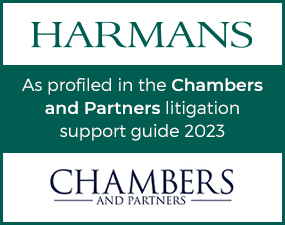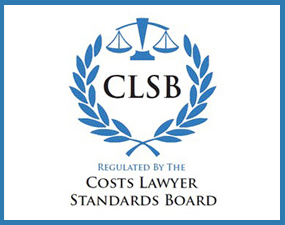The application of the “new” proportionality test on an assessment of costs
It has been sometime since the “new” test for proportionality was introduced for work undertaken post 1 April 2013 with CPR 44.3(2) stating:
“Where the amount of costs is to be assessed on the standard basis…Costs which are disproportionate in amount may be disallowed or reduced even if they were reasonably or necessarily incurred…”
The statement that proportionality trumped necessity was a difficult concept for many, if not all, claimant solicitors to accept and early judicial guidance was anticipated, as surely the purpose of a detailed assessment was to consider each disputed item and decide if the work undertaken was reasonable and if reasonable necessary to advance the claim; the “new” approach was interpreted to give rise to occasions whereby at the conclusion of a lengthy assessment of costs the Costs Judge would consider the sum allowed and if the resultant figure “appeared” disproportionate to the Costs Judge a further sum could be “chopped off”.
How the further perceived penalty would be applied was a source of much debate…percentage of the bill? If yes, how was the percentage reduction to be calculated?
By reason of the application of the test being applied to work undertaken post 1 April 2013 only where proceedings were issued pre 1 April 2013* resulting in bills apportioned to show pre/post April 2013 the early anticipated guidance failed to materialise until very recently when Costs Judge O’Hare grasped the nettle in the matter of Mrs Mavis Ann Hobbs and Guy’s and St Thomas’ NHS Trust.
By way of brief background the Claimant sought damages for injuries suffered arising from clinical negligence on the part of the Defendant trust.
The Claimant’s husband, now deceased, underwent surgery for the removal of a lump from his forehead in February 2011; after the procedure a further lump was discovered near his ear and the Mr Hobbs’ GP sought to arrange an urgent appointment at the Defendant’s hospital unfortunately the appointment given by the hospital in April 2011 was for a breast clinic and as a result delays occurred resulting in the necessity for more radical surgery on 6 July 2011 (Mr Hobbs was aged over 80 and the operation lasted approximately 10 hours).
Mr Hobbs suffered confusion and delirium post operation and spent significant time in hospital recovering before his discharge on 13 July 2011.
A formal complaint was made and following receipt of the Trust’s Letter of Response legal aid was obtained.
A report was obtained from a plastic surgeon that was “in no doubt” that Mr Hobbs had received sub-treatment.
A report from a Consultant Oncologist confirmed that there had been unnecessary delay of about five weeks and that the total volume of the lump had likely increased by at least 50% during the period of delay.
The family were noted to have been disappointed that the period of delay in the operation had not been found to have been longer and arrangements were then made for a telephone conference with Counsel.
Further expert evidence was obtained by the Claimant (Consultant Anaesthetist) and correspondence exchanged between the parties; the Defendant provided an admission for the delay but only for a period of two to three weeks.
Mr Hobbs sadly passed away shortly before the receipt of the Defendant’s response admitting the short period of delay; there was no suggestion that his death was accelerated by any wrong act on the part of the Defendant.
The conduct of the claim passed to Mr Hobbs widow, the Claimant; legal aid was not available and a CFA was entered into post April 2013 thus no success fee was recoverable against the Defendant.
The Defendant made a Part 36 offer at £1,500.00 which was rejected with a counter-offer made in the sum of £10,000.00; further offers were exchanged before the matter was resolved pre-issue with the Claimant accepting the Defendant’s revised offer of £3,500.00 plus costs.
The Claimant’s Bill of Costs amounted to £32,329.12 and proceeded to a provisional assessment with Master O’Hare reducing the claim on the grounds of reasonableness by approximately two-thirds, the Claimant being allowed £9,879.34 including VAT plus the costs of the provisional assessment.
The majority of the reduction arose from the hourly rates claimed, a conference held with Counsel with a further reduction on the grounds of proportionality.
As might be expected the decision was not well received by the Claimant and a request was made for a post-provisional hearing.
The hearing occupied over 5 hours during which the Costs Judge re-assessed the bill on grounds of reasonableness but only heard argument as to what, if any, further adjustment was appropriate on grounds of proportionality.
The Costs Judge provided his written reserved judgement to state and explain his decision as to proportionality.
As stated one of the main reasons for the significant reduction to the Claimant’s bill of costs related to the hourly rates sought – Grade A fee earner located in the City of London seeking £300.00 per hour. The Costs Judge considered, as an appropriate starting point, Outer London rate for a mid range Grade B fee earner when undertaking the provisional assessment, with no enhancement (save for inflation enhancement for work undertaken post April 2014) and allowed £200.00 ph rising to £210.00 ph.
At the hearing the Costs Judge was not swayed from his original allowances.
The Claimant sought to reinstate a conference that took place with Counsel which had previously been disallowed and the involvement of the Consultant Anaesthetist; again the Costs Judge was not swayed from his original decision.
The main issue was in respect of proportionality; the Costs Judge referred to the two tests applicable namely Lowndes and the “new” test as described by the Costs Judge as the Jackson test.
The Costs Judge acknowledged that there was little “by way of authoritative guidance” as to how the Jackson test should be applied and made reference to recommendations made by Sir Rupert Jackson in his review and to “guidance” provided by Lord Neuberger in his lecture delivered in May 2012 including the oft quoted paragraph:
“… the obvious way of introducing proportionality is that … adopted in the [Final Report], namely by effectively reversing the approach taken in Lowndes. In this way, as Sir Rupert said, disproportionate costs, whether necessarily incurred or reasonably incurred, should not be recoverable from the paying party. To put the point quite simply: necessity does not render costs proportionate. Reference to necessity can be said to be positively misleading as it suggests necessary to achieve justice on the merits: substantive justice. A fundamental tenet of both Woolf and Jackson, accepts that that aim must be tempered by the need for economy and efficiency, and, above all proportionality. On one view, once one has a proportionality requirement, necessity may add nothing; on another view, any test which incorporates necessity is one which will all too easily see necessity trump proportionality. However, it may well be that it is right to retain necessity as a requirement, provided that it is borne firmly in mind that it is one of two hurdles which have to be cleared.”
The Costs Judge referred also to R v Supreme Court Taxing Office ex p John Singh and Co [1997] 1 Costs LR 49 and Kazakhstan Kagazy PLC v Zhunus [2015] EWHC 404 (Comm).
The Costs Judge explained that on the provisional assessment he had considered it reasonable for the Claimant to incur costs exceeding £11,000.00 plus VAT for steps including the obtaining of medical records, expert evidence, send the letter of claim and settle the matter pre-issue. The Costs Judge then considered whether the sum allowed as reasonable was also proportionate, he found that the sum was not proportionate when considering the factors as set out in CPR 44.3(5) and in particular (a) and (c).
The Costs Judge advised that he had decided against “chopping off a slice of all of the costs” he had found to be reasonable and had disallowed three items that he considered, “with hindsight” to be inconsistent with the true value of the claim:-
1) The costs of instructing a Consultant Anaesthetist (notionally valued at £600.00 plus Vat);
2) Costs incurred in connection with Claimant’s Part 36 offer of £10,000 (notionally valued at £200.00 plus Vat) and
3) Other profit costs allowed at the Grade B rate but at Grade C rate of £165.00 (notionally valued at £400.00 plus Vat).
The Costs Judge opined that whilst it was “reasonable” for the Claimant’s solicitors to have incurred the items it was “unfair” to expect the Defendant to pay for the items.
Of note the Costs Judge referred to the view of the two of the Lords Justices in Medway Primary Care Trust v Marcus [2011] P.I.Q.R. Q4, (a case in which the claimant reasonably sought damages exceeding £500,000, necessarily incurred at least £50,000 pre-issue but ultimately won only £2000) finding that the rule against the use of hindsight in costs assessment (Francis v Francis and Dickerson [1955] 3 All ER 836) was a rule “based upon reasonableness, which, today, is trumped by proportionality.”
The adjustment to reflect the grounds of proportionality brought the provisionally assessed amount down to £10,000.00 (including VAT but exclusive of costs of the provisional assessment).
At the post-provisional hearing the sum allowed as reasonable rose by about £800 plus VAT and the only argument was in respect of whether or not the reasonable costs allowed were disproportionate.
The Costs Judge was not persuaded that his provisional assessment would have been different had he, as suggested by the Claimant, omitted the costs of drawing and checking the bill adding, “More importantly, now the post-provisional figures are known, I remain of the view that the reasonable costs allowed in this case are disproportionate and should be reduced by £1200 plus VAT as described above”.
Whilst this is but one Costs Judge’s view of how the “new” proportionality should be applied on an assessment of costs it is likely to be a view adopted absent further guidance from the higher courts.
One can not but help to consider this is a further victory for Defendants in a system that was already viewed by many Claimant firms as “Defendant friendly”.
The application of the “new” test allowing hindsight to be applied on assessment is, in the writer’s view, worrying; it abandons the established test of what was reasonable with the solicitors’ then knowledge of the case as enshrined in the above mentioned long standing judgment in Francis and Francis.
The definition of necessity – Needed to be done, achieved, or present; essential:
The definition now appears redundant if the “costs” of the step(s) taken appear disproportionate looking back many years after the event.
*By way of reminder:
· All work undertaken pre- 1 April 2013 – Old Proportionality Test (Lownds) applied to all work;
· All work post 1 April 2013 – New Proportionality Test (Jackson)
· Work pre and post April 2013 where no proceedings issued – Old Test applied to pre April 2013, New Test applied thereafter
· Work pre and post April 2013 where proceedings issued pre April 2013 – Old Test applied to ALL work
· Work pre and post April 2013 where proceedings issued post April 2013 – Old Test applied to pre April 2013, New Test applied thereafter



